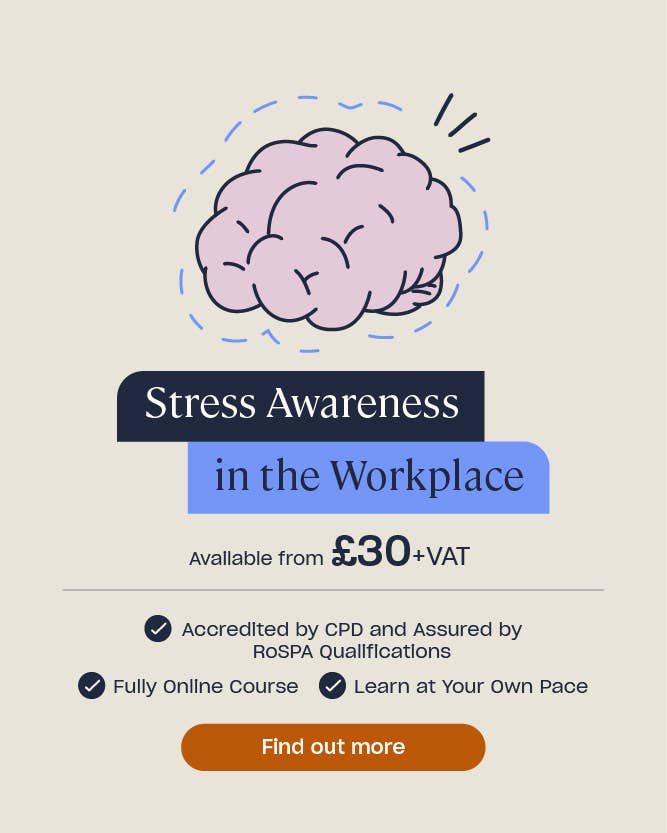Work Related Stress: Your Responsibilities as an Employer
According to the HSE, stress causes approximately 40% of all work-related illness. Whilst it is not an illness in itself, prolonged stress can lead to an array of mental and physical illnesses, including:
- Anxiety.
- Depression.
- Eczema.
- Heart disease.
Stress can impact anyone, at any time, and it is not only harmful to the individual experiencing the symptoms. Long-term illnesses which result from stress can have monetary and moral consequences for your business. It could even lead to higher staff turnover.
Managing Staff Absent with Work-Related Stress
When considering long-term illness, it’s important that you approach the topic with a considerate and sensitive approach. Long-term illnesses can be a result of a serious illness involving an operation and recovery time, or due to issues with mental health. Work-related stress can result in both scenarios, and you need to approach every case with empathy and sensitivity.
If an employee is absent for less than 7 days, they are permitted to ‘self-certify’ their illness. You may then reintroduce them with a return to work interview, should you want to.
For illnesses lasting longer than seven consecutive days, you can request that your employee provides a Statement of Fitness for Work from a GP. The seven days include both weekdays and weekends, even those they do not usually work. The medical professional filling in a Fit Note will either decide an employee is not fit for work or will suggest advisory measures to take. You should note that, if you do not agree to implement these advisory measures, the employee should be considered unfit for work.

Qualifying for Standard Sick Pay
An employee will qualify for standard sick pay (SSP) if they:
- Are considered an employee and have done some work for you.
- Have been ill for a period of at least 4 consecutive days. This includes non-working days.
- Earn greater than £113 per week, before taxes.
- Inform you of their illness before your deadline, or within 7 days should you not have one.
As an employer, you are legally obliged to pay SSP (£ 89.35 per week, before taxes) for a period of up to 28 weeks, for any qualifying employee. After 28 weeks, any sickness related absence becomes unpaid.
Maintaining Communication
It is important to ensure regular communication with an absent employee. Ensure you inform them about their position, such as changes in duties, sick pay, and any new work-related updates (including promotion opportunities).
When engaging in sickness absence meetings, you should aim to:
- Understand the reason for their absence.
- Determine how long the absence might last (for employees on long-term sickness leave).
- Discuss the chance of further absences (for employees taking multiple absences).
- Consider the possibility of implementing any measures that might improve attendance or health and allow them to resume their normal duties.
- Arrange further meetings and actions to take.
- Discuss their job security. You might be able to proceed with a dismissal process for an employee on sick leave. However, you must act reasonably and follow a fair process when undergoing any dismissal. If an employee is potentially facing termination, you should give them notice of this.
Your employee has the right to be accompanied to any sickness-absence meetings you engage in.
Use the information from these meetings to determine if it’s necessary to hire an interim employee to cover any duties, or if you can divide the work between existing team members. However, ensure you do not overload your other employees, as this could lead to increased incidences of work-related stress.
Need a Course?
Our Online Stress Awareness Training is suitable for individual learners who wish to learn about how they can manage their stress. It provides a range of useful strategies in which both employers and employees can deal with stress and reduce it to a manageable level.
Return to Work Interview Questions for Work-Related Stress
Return to work interviews are not always the best approach to reintroduce an absent employee to work. However, in the event that an employee has been absent for a significant amount of time, return to work interviews can be an opportunity for you to understand more about what happened. It helps you figure out the root cause of an employee’s stress and what measures you can implement to reduce possible triggers.
You should use return to work interviews to:
- Welcome your employee back into the organisation. Use this opportunity to ensure they are well enough to return, detail any changes in duties or organisational changes, and reinforce their importance and value to your business.
- Discuss the details of their Fit Note, if they have one. You should discuss any medical advice with your employee and decide if you can accommodate the changes by altering their duties.
- Understand the reasons for their absence in greater detail. Is their stress due to a high workload, unchallenging work, bullying in the workplace or life-related? There are many reasons why an employee might experience stress, and you should strive to determine ways you can reduce negative triggers. High turnover is expensive, so if you can easily implement stress-reducing controls for your employee, it is worth it.
You should use the interview to explain if their level of absence is increasing the risk of job loss. Additionally, clarify what is expected of them, and the consequences if they do not achieve this.

Reducing Workplace Stress
The root cause of stress is personal to each employee. However, there are some affordable and easy things you can do to reduce workplace stress.
To help manage and reduce workplace stress, you should:
- Allow ‘flexi-time’. Flexible working hours will provide your employees with independence and freedom.
- Engage regularly in performance reviews, ensuring you provide constructive feedback. Performance reviews are vital because they provide an employee with key areas they need to work on. Ignoring this opportunity to communicate with your employee leaves them doubting their abilities and stressing about their job performance.
- Inform them promptly of upcoming organisational or duty changes. Being kept in the dark can cause high levels of workplace stress as employees will start to fear for their job security. To save your employees this stress, speak openly and honestly about any changes to the day-to-day running of the business.
- Ensure they have a manageable workload. High workloads and long hours will result in stressed-out employees. Make sure all deadlines are realistic and your employees feel supported and able to carry out their tasks.
- Encourage all employees to take their full lunch break. High workloads and demanding deadlines often result in employees skipping lunch breaks and working long hours. It’s important that your employees have a good work-life balance. If not, it can result in a quick burn out, high levels of stress and high employee turnover. You should, therefore, encourage all employees to take their allocated breaks.
What to Read Next:
- Definitive Guide To Zero Hour Contracts
- Stress Management Quiz
- How to Manage Stress at Work
- A Manager’s Guide to Preventing Sexual Harassment in the Workplace
- The Cost of Presenteeism in the Workplace & Why it’s Not Just About Money
- Mental Health Awareness Training
- Stress Awareness in the Workplace Training











